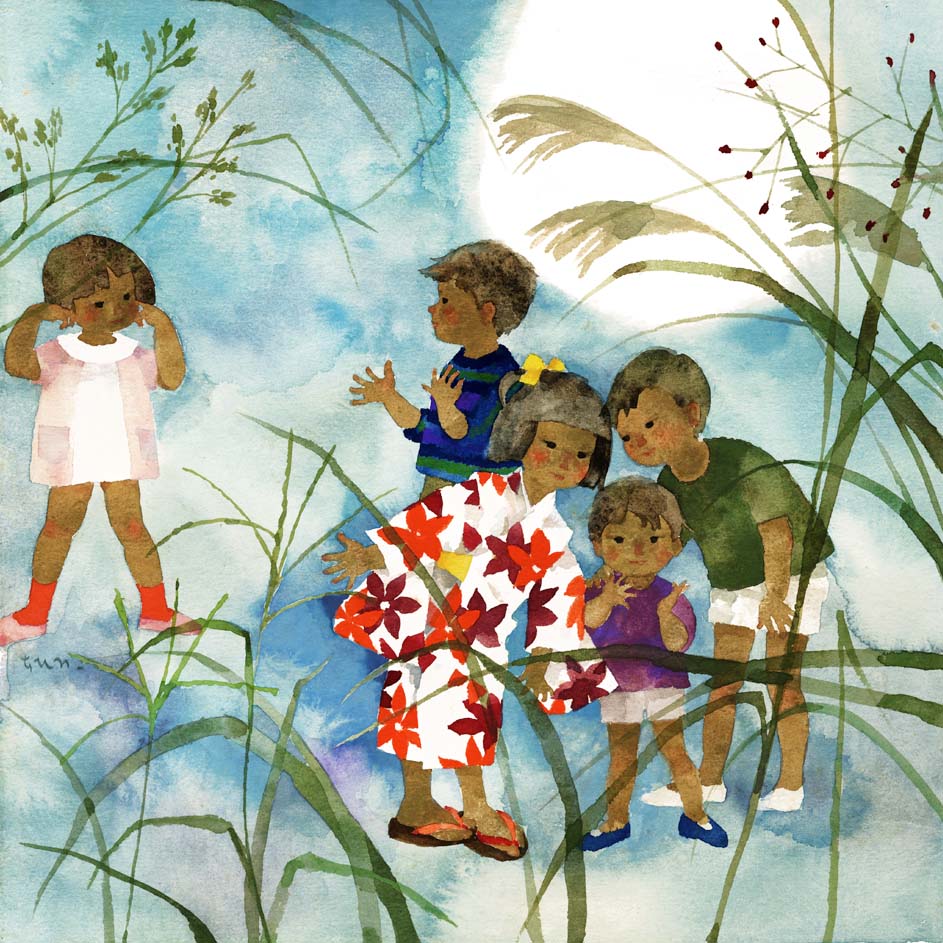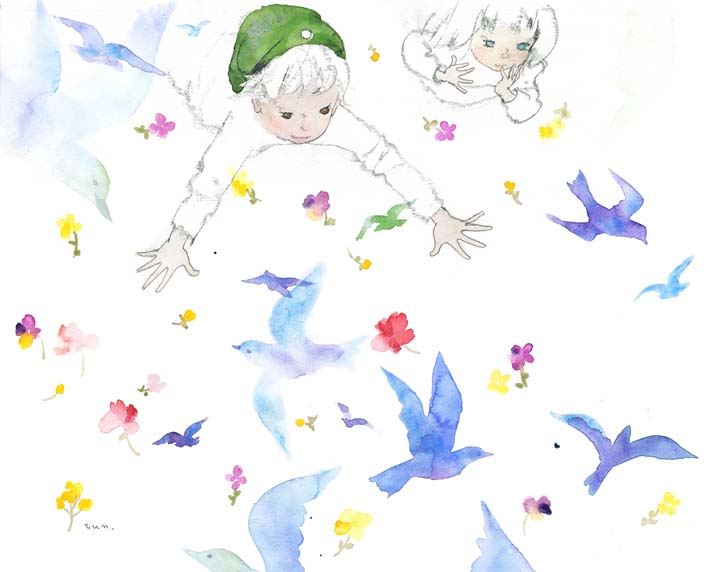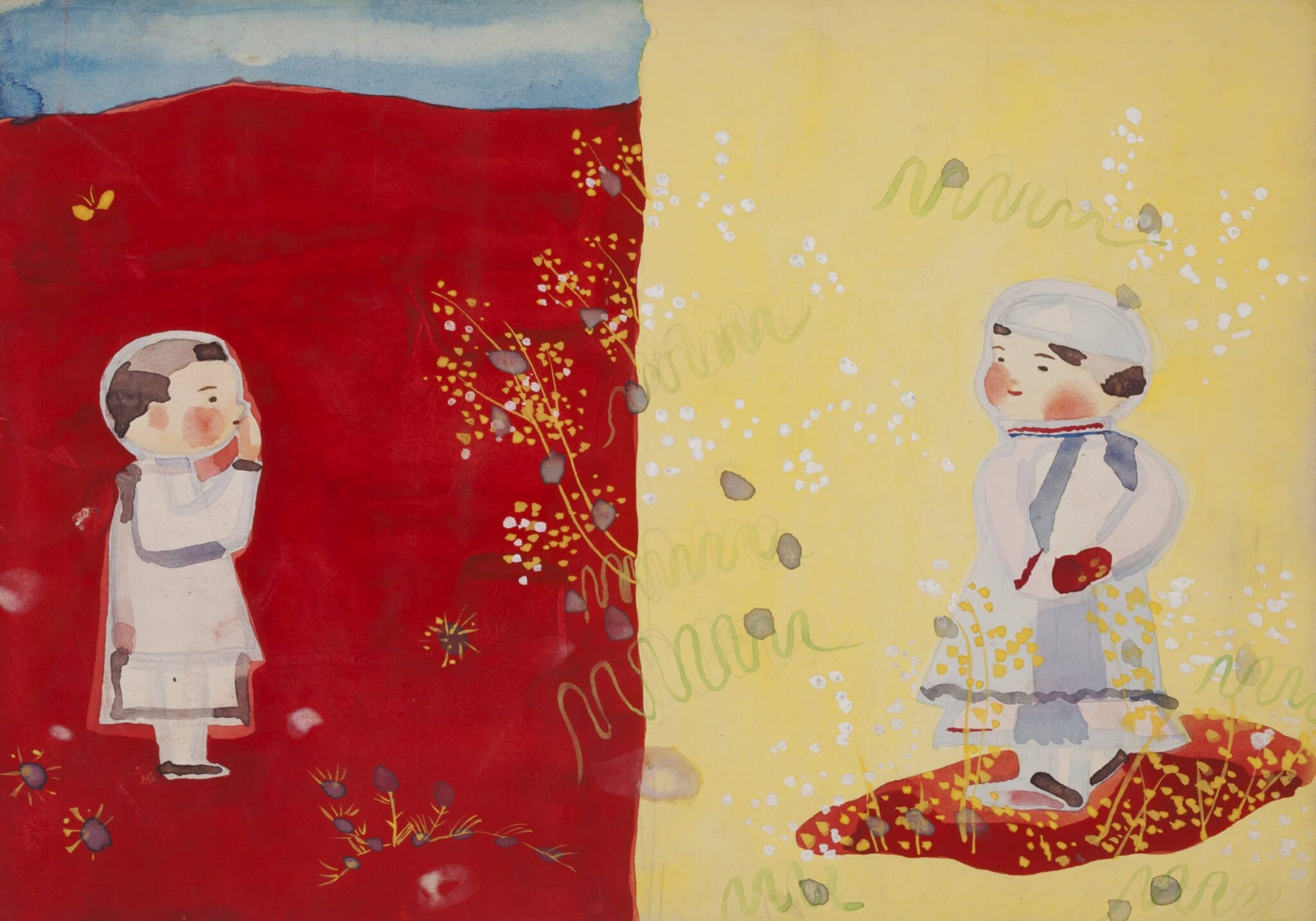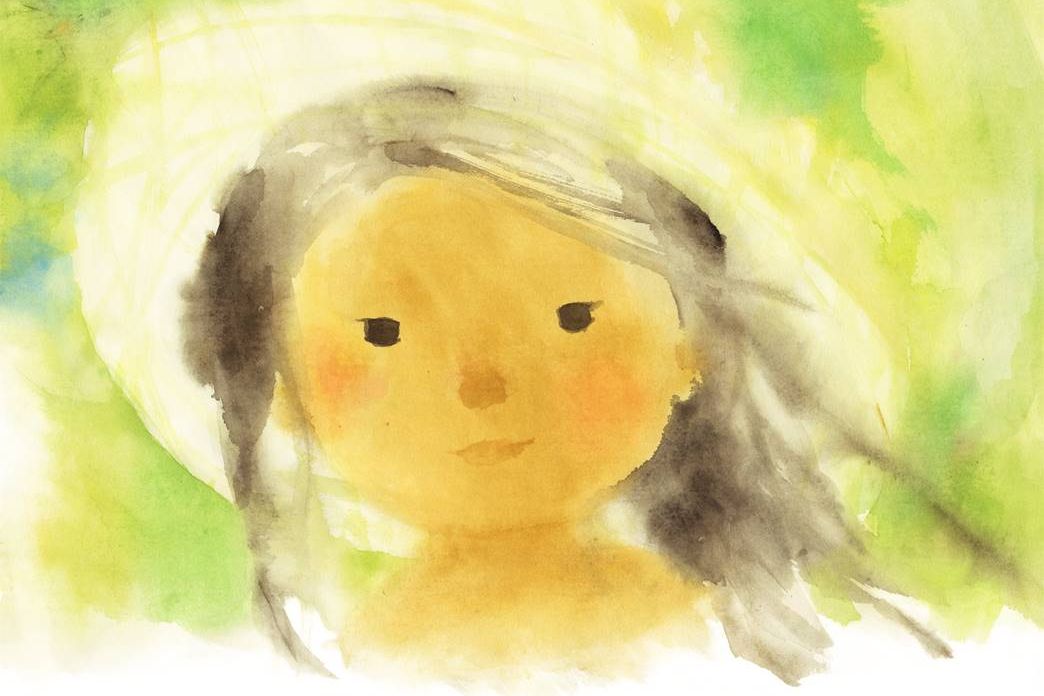You might not know the artist by name, but there’s a chance you’ll have seen the work of Chihiro Iwasaki before. She contributed illustrations to numerous children’s books in Japanese and English, notably Hans Christian Andersen’s The Red Shoes. In Tokyo, there exists a beautiful museum in Nerima ward, entirely dedicated to the 20th-century painter. It is built in the former location of the house and studio of the painter, where she created countless works for just over two decades before her death.
We take a look at Iwasaki’s life, her influence and the museum’s homage to children, peace and art.

Chihiro Iwasaki, Children under the Full Moon, 1965 | Courtesy of the Chihiro Art Museum Tokyo
A Life Marked by War
Iwasaki was born in 1918. Both her parents worked, which was a rarity at the time. Her father was an architectural engineer, while her mother taught in a girls’ school. In her early years, she showed an interest in calligraphy and painting. From the age of 14, she took lessons from the Western-style painter Saburosuke Okada. A forced marriage at the age of 20, however, meant she followed her husband to Manchuria, where he took his own life. Iwasaki then returned to Japan with her parents, only to find that their family home was destroyed following an air raid in 1945. Her family then moved to Matsumoto in Nagano Prefecture.
After the war, Iwasaki joined the Communist Party and wrote for the Democratic Women’s Journal. All her life, Iwasaki was a pacifist, committed to ending all wars and fighting child poverty. In the early 1950s, she moved on to creating illustrations for magazines, advertising campaigns and schoolbooks, which prompted her to devote herself entirely to her art.
Iwasaki published her first children’s book in 1956, at the age of 38. Many others would follow. The artist went on to receive awards in Japan and internationally for her work, which seemed to move hearts around the world, regardless of language barriers.
Sadly, Iwasaki passed away young, at the age of 55, when she succumbed to cancer.

Chihiro Iwasaki, Tyltyl and Mytyl Running after the Blue Bird from Aoi Tori (The Blue Bird), Kodansha, 1969 | Courtesy of the Chihiro Art Museum Tokyo
Soft, Luminous Watercolors
Iwasaki’s style is instantly recognizable. Her watercolors often feature pastel, very diluted colors that create a soft, aquatic atmosphere. Iwasaki’s work often features delicate characters immersed in colorful universes. Looking at the superposition of colors, the dosage of water and the brushstrokes, you can see how the artist was influenced by Western art, Chinese paintings and sumi-e (Japanese ink painting). It exudes freshness and transparency.
Her work is floral and childlike. Children of all ages and sizes stroll through marvelous gardens with a thousand flowers. They sometimes appear to be fairies or elves hiding among giant tulips or irises. They play together with animals, flowers, leaves or fruits. They admire the moon or the sea. They draw, dance or walk in the rain. Simply put, Iwasaki’s paintings are an ode to happy childhoods, to carelessness and to dreams.

Shigeru Hatsuyama, Rape Blossoms, 1932, Private Collection | Courtesy of the Chihiro Art Museum Tokyo
A Museum to Discover
The Chihiro Art Museum Tokyo is located in Nerima, where the artist’s house used to be. A blossoming flower garden welcomes visitors of all ages in a soft and joyful atmosphere, not unlike Iwasaki’s paintings.
You’ll find several rooms where Iwasaki’s works are exhibited, with benches and armchairs. There are also books that children can flip through and admire the watercolors more closely. Iwasaki’s studio was integrated into the museum. You can see the table where she painted, her palettes and brushes. It’s charming and touching.
You’ll also find a large library with tables, chairs and sofas. Everyone can browse one (or two) of the 3,000-plus children’s books from around the world and read quietly in one of the comfortable corners. And right next to it, you’ll find a playroom for little ones.
The museum offers, in addition to its permanent exhibition, temporary exhibitions revolving around special themes related to the paintings of Iwasaki and other artists. Until June 18, 2023, you can see an exhibition on light in the work of Iwasaki, “Chihiro: Colors of Light,” as well as an exhibition on another great Japanese illustrator, Shigeru Hatsuyama.
Wrap up your visit by having a drink and a small cake at the museum’s café. You can sit at a table either inside facing the garden or on the terrace, weather permitting. At the museum shop, you’ll find a large selection of postcards and reproductions in different sizes, varied stationery, tableware, T-shirts and more.
Without a doubt, the Chihiro Art Museum Tokyo was designed especially for families. Children are really welcome and can spend hours upon hours surrounded by art made with them in mind.









